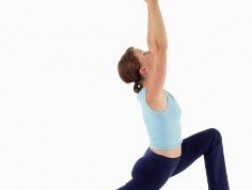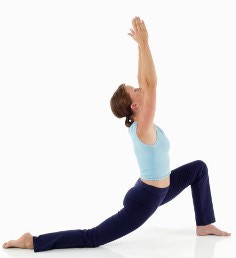Awaken your dormant glutes!

I know, I know “glute activation” is a big buzzword in the fitness world at the moment with everyone jumping on the glutes bandwagon, thanks to the likes of Bret Contreras (aka the Glutes Guy) and others. I have to say that I personally love the glutes trend! So much so that I couldn’t resist jumping in with a post on glute activation!
Why are our glutes so important?
Training your glutes is about so much more than just aesthetics (although having a round, perky butt is pretty cool as well!) It’s also about improving function and performance.
The glutes are the biggest, most powerful muscle in your body! They are connected to your upper body, core and lower body and they play a huge role in movement, and power/speed/force production. The thing about our glutes is that they are naturally pretty lazy if we allow them to be. Here’s a quote from Bret Contreras, which explains it perfectly:
“Rather than sticking up for themselves and saying, “Hey! We need activity too,” they go into early retirement. They just close up shop and stop working. This causes other muscles to take over and bear the brunt of the work. Considering that your glute muscles were designed by nature to be the strongest muscles in your body, this overcompensation puts a lot of wear and tear on muscles that are not meant to handle this work-load. When the glutes shut down, you recruit other muscles to do big jobs that they are not meant to do. Your low back picks up most of the slack, as do your hamstrings, quads and other surrounding muscles. Over time, this causes injuries. Most low back injuries are preventable, but only if strong glutes are part of the picture. Even the slightest lower body injury will cause your glutes to shut down.”
From my personal experience with clients, there are 2 main problems that occur with regards to the glutes not working properly.
Inhibited glutes: In this situation the glutes are pretty much on permanent shutdown mode. For a variety of reasons, they don’t contract in your daily life when you walk, stand, get up from a chair, or when you move in exercises or in a sport. I tend to see this mainly with people who are starting training from scratch, coming from a very inactive lifestyle, i.e. those who previously have had little to no activity in their day to day life.
Overshadowed glutes: This is where the glutes DO fire correctly, but because they are not as strong as the other lower body muscles (i.e. the quadriceps), the body tends to like to use other muscles to do what the glutes SHOULD be doing, resulting in inefficient performance and often some type of pain or injury in the long term. Because the human body is so tightly connected, when one muscle is compensating for another, this can affect the whole body. Whenever you perform a movement such as a squat, lunge, deadlift, jump, sprint, or any exercise that involves several different muscle groups, the majority of work will tend to be done by the strongest of those muscle groups. Your natural body structure will also influence this to an extent. For example, if you have naturally big and strong biceps you may also have a hard time getting much lat stimulation out of pull-ups. Technique will also have a substantial impact on all of this, but one problem many exercisers and athletes have is that proportionately they have more strength and natural muscle cells in muscles other than their glutes, like their quads, for example.
Following are some other things as well can that inhibit proper glute activation:
Pain in general can inhibit muscle contraction and is a major player in glute inhibition. For example, if you have a lot of lower back pain or hip pain, if you’ve hurt your knee or your hip, pulled your groin or hammy, twisted your ankle…All of these injuries decrease glute activation. This is a survival mechanism, but the problem is that the glutes don’t necessarily just switch back on when the injury has healed. They usually have to be reactivated.
Poor posture is another big culprit. This can definitely inhibit the glutes. I find this especially with people who have office jobs and spend a good portion of their day sitting down. They tend to have very overactive hip flexors and a hunched posture in general.
But as I said above, I believe the most common culprit of all of these things is just general glute inactivity. Strength Coach Mike Boyle coined the term, “glute amnesia.” Basically, with all of the sitting that we do, our glutes are sleeping. So we need to wake them up! If you fail to consistently use a muscle, and you fail to regularly activate it to high levels of capacity, it will inevitably quit working properly.
Here’s another quote from Bret:
“If a sprinter comes to me because she wants to shed seconds off her time, I work on her glutes. If a baseball pitcher asks me to help improve his performance, I get his glutes stronger. For clients with back pain, I strengthen the glutes. For clients with poor posture, valgus collapse, anterior pelvis tilt, or any other physical impediment, I get those glutes stronger. The glutes play an integral role in your overall functioning and wellness, but the single nagging issue that prevents you from running like a well-oiled machine is that your glutes shut down. That’s right. The glutes actually stop working properly due to inactivity. World-renowned physical therapist Vladimir Janda noticed this decades ago. Some muscles are quite prone to inhibition, with the glutes probably being the worst of the bunch. So, all of this sitting at a desk all day, watching television and driving from place to place causes your glutes to retire early.”
How often should we train our glutes:
Now that we know just how important our glutes are, you are probably wondering, how often they should be trained and activated. When it comes to training glutes, I personally believe that for the best results we should be hitting our glutes multiple times per week, from different angles; varying volume and load. The glutes are not a small, fragile muscle group. They are biggest muscle group in our bodies and they can handle a lot of stress! I like training my glutes hard a few times a week. And when it comes to activating them, I believe this is something we should be doing every single day and definitely before every training session. Once they are switched on, it makes general movement and other exercises so much more effective.
How do I “activate my glutes”?
Following are some favourite glute activation exercises I regularly use. Remember, always think quality over quantity, and focus intensively on feeling the glutes and recruiting from the glutes when performing these exercises.
Your goal is to eventually reach the point where your glutes automatically “switch on”, and where you can stop having to “think glutes” all day long. Of course, any good lifter will have to remind him or herself to squeeze their glutes on maximal hip extension exercises such as when locking out a deadlift. But your glutes should start to fire automatically when you extend the hip (or conduct any other movement that relies on the glutes). Within a few months of incorporating some of these activation exercises, you should be able to balance out your strength and movement patterns, and really understanding what it feels like to use your glutes, and lead with your glutes, in all your movements.
Hip Flexor/psoas stretch:
Before jumping into the glute activation exercises, make sure your hip flexors are relaxed. Use this slow, static hip flexor stretch to help inhibit the often overactive hip flexors, (particularly the powerful psoas muscle) while you get your glutes firing. This will help to minimize letting the hip flexors do all of the work instead of the glutes.
- Begin in a forward lunge position and drop your back knee to the floor.
- Raise your arms and hands up over your head and look up.
- Press your hips forward and down toward the floor. Feel a stretch through your torso, hip, groin and thigh.
- Hold the stretch for about 20 to 30 seconds, release and repeat on the other leg.
- You can modify this stretch based upon your own flexibility and limitations, but be sure to keep your forward knee over or behind your ankle , not in front of it.
The Bridge:
- Lay on your back with your hands by your sides, your knees bent and feet flat on the floor.
- Tighten your abdominal and buttock muscles.
- Raise your hips up to create a straight line from your knees to your shoulders.
- Squeeze your core and try to pull your belly button back toward your spine. The goal is to maintain a straight line from your shoulders to your knees and hold for 20 to 30 seconds. If your hips sag or drop, lower yourself back on the floor.
- Be sure to contract the glutes hard and keep the hamstrings relaxed. You may need to place your hand on your hamstrings to make sure they stay soft. You can also do single leg glute bridges to intensity this movement and target your individual glute muscles. If you are feeling this more in your hamstrings than your glutes, try it with your feet under your knees.
The X-band Walks
- Stand with your feet shoulder width apart stepping on the resistance band.
- Cross the band (make an “X” with the band) at the knee joint and hold the band in each hand with your elbows bent to 90 degrees.
- I like to maintain a slight bend in my kneees as I find this acticates the glutes even more. Step out to the right for 5 reps, then to the left for 5, you can also travel forward and backward.
The Quadruped Hip Extension
- Start in a quadruped position (on your hands and knees).
- Tighten your core and contract your abs to stabilize the spine.
- Focus on contracting the left glute. You may need to place your hand on your glute to be sure it contracts.
- Lift the left leg up while keeping your glutes switched on the entire time.
- Lower to the start position and repeat 10 reps per side.
Lying Clam Exercise
- While lying on your side, keep both knees bent and flex the hips to 30 degrees.
- While keeping your heels touching and pelvis still, open your knees by contracting your glute medius. This is a very slow, small and targeted movement.
- Place your hand on your gluteus medius (just below and behind your hip) to ensure that it is firing during the movement.
- Repeat the movement slowly 10 to 15 times and switch sides.
Other great glute exercises to add into your warm ups and programs are: single leg deadlifts, single leg squats, sprinting, prowler pushes, bulgarian split squats, weighted hip thrusts etc., but I would suggest you do some form of glute activation work at the start of all workouts just to switch them on so they are ready to work for you.
Lastly, as with any muscle group, if you have very tight glutes make sure you foam roll them regularly and use a ball to dig in and break down any adhesions that may be affecting them and keeping them from firing properly.
Join the other 10,000+ who get my best fitness, diet & mindset tips.



Comments